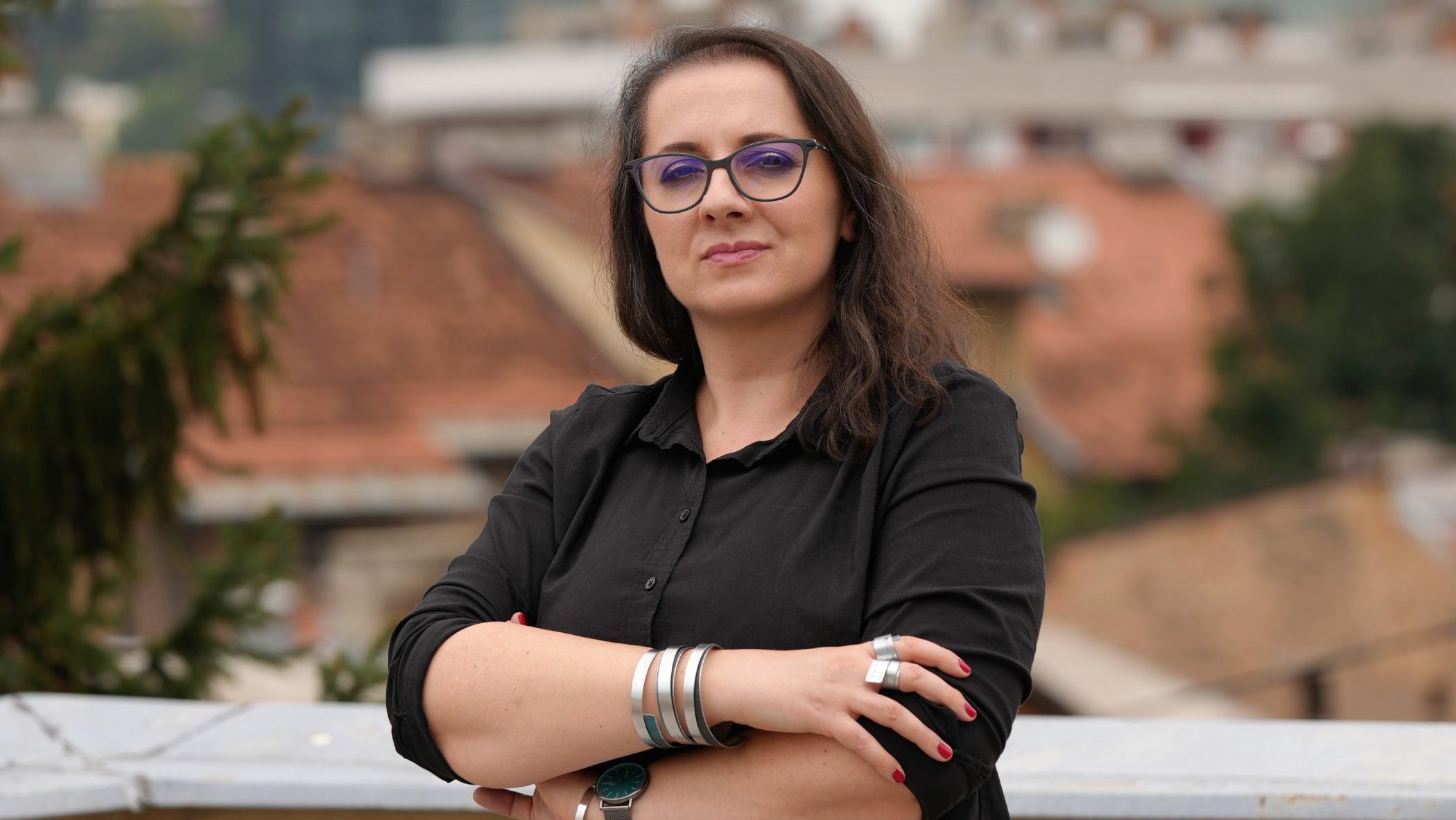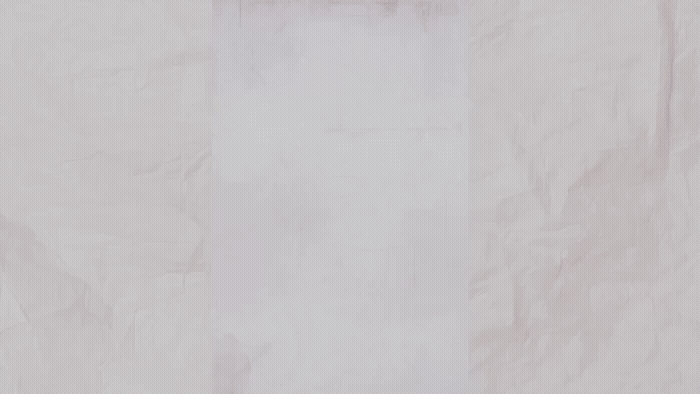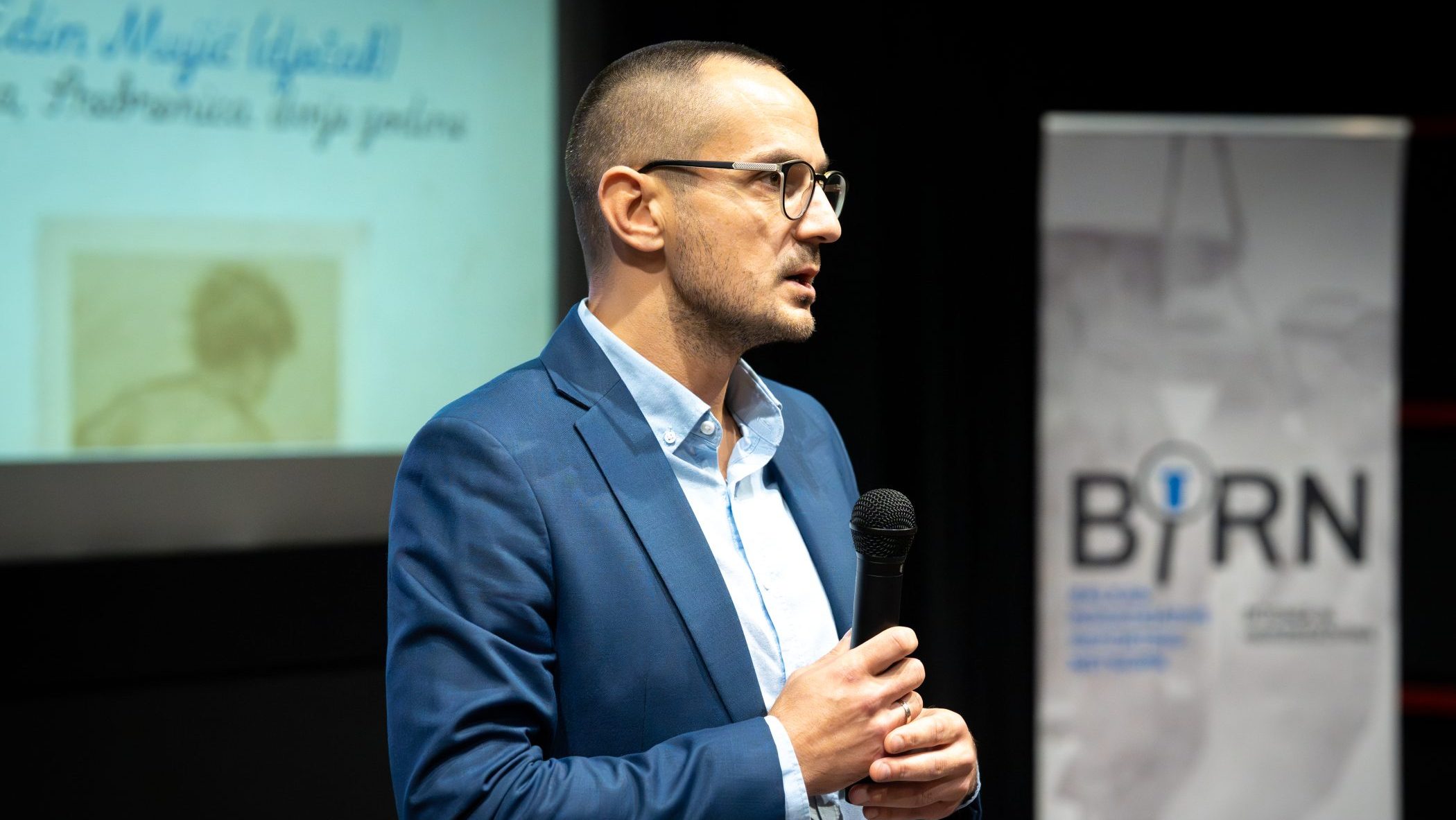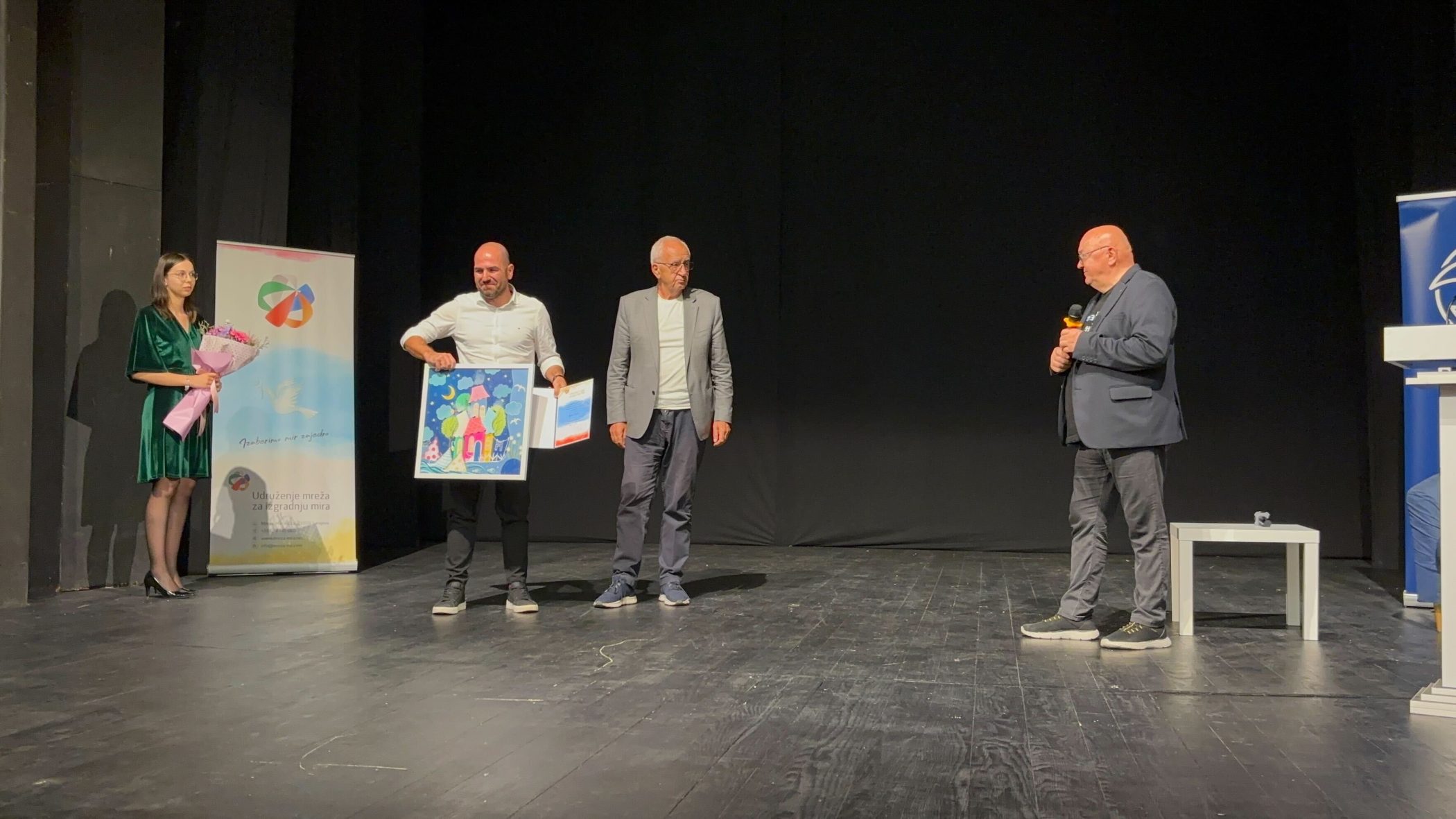This post is also available in: Bosnian
The video testimony is part of “Lives Behind the Fields of Death”, a joint project of the Balkan Investigative Reporting Network of Bosnia and Herzegovina, BIRN BiH, and the Srebrenica Memorial Centre.
It was among 25 other works of art that were selected as the best within the NO-OBLIVION project this year.
The story told by Emina Hajdarevic was the only video selected, and it impressed the jury the most, so they decided to award it the first prize.
Presenting the video in front of nearly a hundred participants, Lamija Grebo said that “Lives Behind the Fields of Death” was one of the most special projects she ever worked on during a ten-year career filled with survivors’ stories.
“I am particularly proud of this award as a regional recognition, because a lot of effort has been invested in this project, and the survivors have placed confidence in us, for which I will always be grateful,” Grebo said.
According to her, personal stories are the point at which people can connect through the personal tragedy and pain inflicted by war, so it is important that projects such as “Lives Behind the Fields of Death” have a lasting life as testimonies to grave crimes.
“This award is also important because we witness the denial of genocide and other crimes as well as the glorification of war criminals on a daily basis, and art is one of the ways to fight against that,” Grebo said.
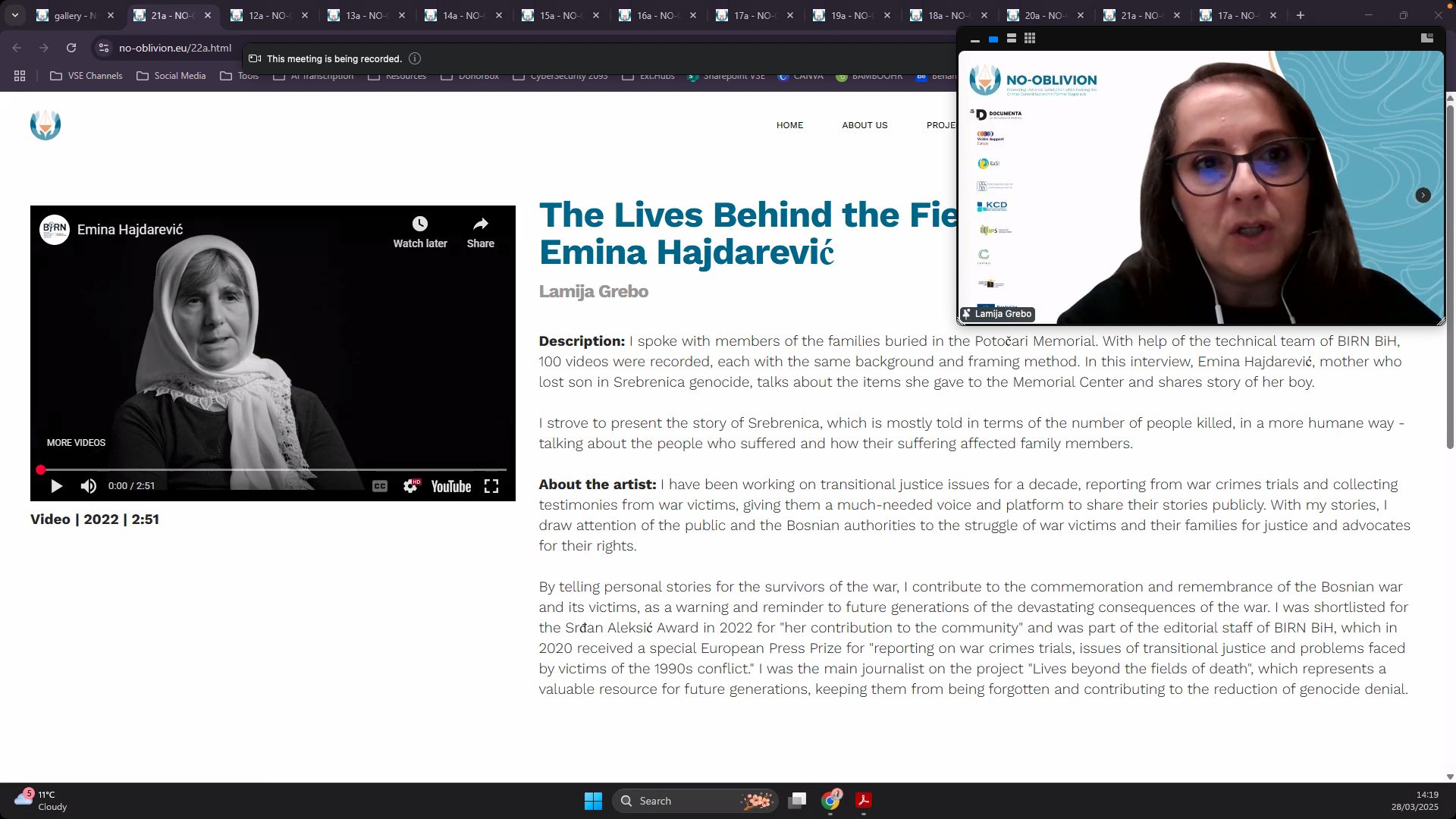
Presentation of the video that won the first prize. Photo: Screenshot
Her work will also be presented at the Reviving Balkan Arts Festival to be held in Croatia in early April.
In addition to the video, which is now part of the permanent exhibition of the Srebrenica Memorial Centre, this year’s online exhibition Remembering through Art also features posters, photographs and paintings by 24 authors from Bosnia and Herzegovina, Romania, Croatia, Serbia, Greece, Portugal and Poland.
All the works are dedicated to preserving the lessons of history and promoting justice and reconciliation.
Second prize went to Vasilika Siatara from Greece for a painting called “Signs and Memories”, which got the same number of points as the award-winning artwork – but her prize will be of monetary nature.
Third prize went to Bosnian photographer Dzenat Drekovic for a photo essay “The Noise of Silence”, which tells the story of the notorious Omarska detention camp.
Fourth prize was awarded to Ioana-Cristina Bobe for “Trampled Pride”, inspired by the testimonial of Grozdana Cecez, a victim of wartime sexual violence in Bosnia and Herzegovina.
The exhibition and prize competition are part of the NO-OBLIVION project, funded by the European Union, which focuses on remembering the conflicts in the former Yugoslavia and ensuring that the voices of victims and witnesses are not forgotten.
The initiative is supported by eight European organisations that are fostering additional connections between those whose goal is to turn art into a special tool for dealing with the past.
